Occupational Environment Monitoring at the Dried Food Manufacturing Plant
99,000 ₫
Note: The above price is calculated for one sample, and the price may vary depending on the area of the environment to be monitored and market fluctuations. For more accurate pricing support, please refer to the quotation table or contact our consulting staff directly.
Occupational environment monitoring at a dried food manufacturing plant is a process of collecting, analyzing, and evaluating workplace factors that may harm workers’ health.
Table of Contents
Toggle1. Overview of Dried Food Production Factory
a. What is a dried food production factory?
Factory for dried food is a production facility where the main process is processing food to create dried food products. Dried food is food that has been completely dehydrated through a drying process to increase shelf life and maintain product quality.

b. Production processes in a dried food production factory
In a dried food production factory, the main processes include:
- Preparation of raw materials: Food ingredients, such as fruits, vegetables, meat, fish, or other foods are selected and prepared for the drying process.
- Processing and treatment: Ingredients are cut, deseeded, ground, or processed differently depending on the type of dried food to be produced.
- Drying process: Prepared ingredients are placed into dryers for dehydration. This usually uses high temperatures or vacuum drying technology to effectively remove water from the ingredients, creating dried food.
- Packaging and storage: After drying, the dried food is packaged in high-quality materials to protect it from moisture and light. This packaging process extends shelf life and maintains product quality.
- Quality control: Dried food products are inspected to ensure they meet standards for shape, color, flavor, and moisture content.
- Storage and transportation: Dried food products are stored and transported to sales points or end customers for consumer access.

c. Types of machinery used in dried food production factories
In a dried food production factory, many types of machinery and equipment are used to perform production and processing tasks. Some commonly used machinery includes:
- Dryers: The most important equipment in dried food production. They remove water from ingredients using heat and airflow. Dryers come in various types and sizes depending on production scale and specific dried food types.
- Grinders and mills: Used to crush, grind, or deseed ingredients before drying. This increases surface area and improves drying efficiency.
- Mixers: Used to combine different raw ingredients into a uniform mixture before drying.
- Packaging machines: Automatic packaging machines are used to pack dried food into bags, zip-locks, or boxes. They measure, adjust, and seal products automatically to ensure safety and quality.
- Control and monitoring systems: These systems manage and monitor the production process, including temperature, drying time, packaging, and quality control.
- Cooling machines: Used to cool dried food after drying to prevent moisture absorption from the environment.

d. Occupational diseases that may occur in dried food production workers
Workers in dried food production factories may develop certain occupational diseases due to environmental and work-related factors. Common occupational diseases include:
- Respiratory diseases: Exposure to dust and chemical vapors can cause bronchitis, pneumonia, asthma, and other respiratory issues.
- Skin irritation: Continuous contact with chemicals can cause skin irritation, dermatitis, itching, or other allergic reactions.
- Eye diseases: Machinery and production processes can emit strong light or heat, causing eye inflammation, pain, or other eye problems.
- Hearing issues: Factory noise can lead to hearing loss, tinnitus, and other ear-related problems.
- Spinal and musculoskeletal problems: Heavy labor, improper lifting, or repetitive movements may cause spine injuries, back pain, musculoskeletal disorders, and other mobility-related conditions.
To prevent these occupational diseases, protective measures should be implemented, including the use of personal protective equipment (PPE) such as masks, gloves, and goggles, ensuring proper ventilation, following safety procedures, providing worker safety training, and conducting regular health checks.

e. Common types of dried food on the market
There are various types of dried food available on the market, each produced and used for different purposes. Some common types include:
- Dried fish: Includes salmon, mackerel, herring, anchovy, and other types. Used in cooking and as ingredients for dishes like noodles, sticky rice, or sauces.
- Dried meat: Includes beef, pork, and poultry (chicken, duck). Used as seasoning or ingredients in various dishes.
- Dried fruit: Includes plums, mango, rambutan, pineapple, bananas, and more. Used in desserts, juices, or jams.
- Dried vegetables: Includes tomatoes, potatoes, carrots, onions, garlic, and more. Used in cooking and seasoning.
- Dried nuts and seeds: Includes cashews, almonds, chia seeds, pomegranate seeds, and more. Used as ingredients in dishes, baked goods, or eaten directly.
2. Overview of Occupational Environment Monitoring Service
a. What is occupational environment monitoring in dried food production factories?
Occupational environment monitoring (or workplace environmental measurement) in dried food production factories involves collecting, evaluating, and analyzing metrics of workplace environmental factors to implement timely measures, minimize environmental impacts on workers’ health, and prevent occupational diseases. Monitoring is mandatory for dried food production factories.
Occupational environment monitoring is crucial for protecting, maintaining, and improving worker health, as workers are the primary resource generating profit for the company. Continuous exposure to hazardous factors exceeding allowed limits can adversely affect health and lead to occupational diseases.
REGISTER FOR OCCUPATIONAL ENVIRONMENT MONITORING SERVICE
b. Nam Viet’s occupational environment monitoring program
Nam Viet’s occupational environment monitoring program is developed by engineers specializing in labor safety and environmental protection. The program aims to ensure worker health and safety using modern measurement methods to monitor air quality, water, microclimate factors, physical factors, dust, etc., in the workplace. This program is vital for maintaining a safe working environment and protecting worker health.
Additionally, Nam Viet’s program plays an important role in researching and developing new solutions to improve workplace environmental quality. With the dedication and professionalism of monitoring experts, Nam Viet’s exclusive program is a breakthrough in labor safety management and environmental protection in Vietnam.

c. Standardization in workplace measurement procedures
Standardization in Nam Viet’s workplace measurement procedures is crucial to ensure accurate and reliable results. The program uses recognized standards and procedures from Ho Chi Minh City Department of Health, ensuring collected data is highly reliable for evaluating the work environment and making informed decisions to protect worker health.
These standardized procedures also ensure that measurements are conducted by highly qualified monitoring experts with years of experience, enabling managers and specialists to trust Nam Viet’s results and make precise decisions to safeguard health and the environment.
By applying standardization in workplace measurements, Nam Viet demonstrates its commitment to a safe working environment and contributes to improving labor safety and environmental management quality in Vietnam.
d. Report of monitoring results in dried food production factories
Monitoring results are prepared according to Form 04, Appendix III issued with Decree 44/2016/ND-CP and made in two copies: one sent to the workplace that contracted the monitoring service, and one kept at the monitoring organization.
Monitoring results must be stored permanently as required by law.

e. Frequency of occupational environment monitoring as regulated by law
According to Clause 2, Article 18 of the Law on Occupational Safety and Hygiene 84/2015/QH13, employers must conduct occupational environment monitoring to assess harmful factors at least once a year.
f. Deadline for submitting monitoring results report as required by law
The deadline for submitting reports is before December 31 annually. Enterprises at production facilities must submit the occupational environment monitoring report to the Department of Health where the production or business facility has its headquarters and where employees work.
When there are changes in production technology, processes, or facility upgrades that may introduce new harmful factors, enterprises must update occupational hygiene records regarding these factors and carry out the required monitoring.
g. Regulations on penalties for violations of occupational environment monitoring for employers
According to Article 27 of Decree 12/2022/ND-CP dated January 17, 2022, regulating administrative penalties in labor, social insurance, and Vietnamese workers working abroad under contracts:
- Clause 2: Fines from VND 2,000,000 to 5,000,000 for employers who fail to publicly inform workers at the monitoring site and at locations where hazard management and assessments occur immediately after receiving monitoring results.
- Clause 3: Fines from VND 20,000,000 to 40,000,000 for employers who do not conduct occupational environment monitoring to control harmful effects on worker health as required by law.
- Clause 4: Fines from VND 40,000,000 to 60,000,000 for employers who collude with monitoring organizations to commit fraud in occupational environment monitoring, but not to the level of criminal liability.
3. Harmful environmental factors for workers in dried food production factories
During dried food production, there are several environmental factors that may be harmful to workers. Below are some potentially harmful environmental factors in dried food production factories:
- Dust and chemical vapors: The dried food production process can generate dust and chemical vapors from raw materials and processing. Fine dust particles may cause respiratory irritation and respiratory problems. Chemical vapors, such as preservatives, colorants, and sweeteners, can irritate the skin, eyes, and respiratory system and may pose toxic risks.
- Temperature and humidity: Dried food production often involves heat-related processes, where temperatures can be high or fluctuating. Excessive heat can cause discomfort and fatigue for workers. Inappropriate humidity can also cause discomfort, especially in enclosed working environments.
- Noise: Machinery and equipment in dried food factories often generate noise. Continuous high-intensity noise can damage hearing and cause psychological stress for workers.
- Materials and waste: Dried food production can produce materials and waste such as packaging, dust, and chemical residues. Improper handling can cause environmental pollution and pose health risks to workers.
- Other agents: Dried food factories may also expose workers to other factors, such as strong lighting, toxic substances from raw materials, or skin-irritating ingredients.
REGISTER FOR OCCUPATIONAL ENVIRONMENTAL MONITORING SERVICE
4. Measures to improve the working environment in dried food production factories
To improve the working environment in dried food production factories and protect workers’ health, the following measures can be applied:
- Ventilation system: Ensure good air circulation in the factory to reduce dust and harmful chemical vapors. Use fans and effective ventilation systems to provide clean and fresh air.
- Dust extraction system: Install dust collection systems to capture and remove dust at its source. This reduces workers’ exposure to dust and limits respiratory irritation.
- Use of protective equipment: Ensure workers are provided with full personal protective equipment such as masks, gloves, helmets, and safety glasses to protect against direct contact with harmful substances and reduce the risk of occupational diseases.
- Training and education: Provide training and guidance for workers on safe work practices, machinery and equipment usage, waste handling, and identification of harmful agents in the workplace.
- Periodic inspection and maintenance: Conduct regular inspection and maintenance of equipment and machinery to ensure safe and effective operation. This includes checking safety systems, ventilation, dust extraction, and protective equipment.
- Waste management: Safely handle production waste in compliance with environmental regulations. Ensure proper classification, collection, transport, and disposal according to established procedures.
- Periodically organize occupational environmental monitoring in factories, collect and analyze harmful factors affecting workers, and adjust to reduce hazards to prevent occupational diseases.
5. Benefits of periodic monitoring in dried food production factories
An Toan Nam Viet provides businesses with excellent benefits when using occupational environmental monitoring services in accordance with Decree 44/2016/ND – CP on the management and control of harmful factors in the working environment affecting workers.
- Businesses can proactively control harmful factors in workshops or factories.
- Receive advice and recommendations on measures to reduce harmful factors and improve the quality of the working environment.
- Indirectly protect human resources, the key factor in business development.
- Reduce the impact of occupational diseases on human health, thereby minimizing future treatment costs.
- Improved worker health leads to better product quality and stable production output.
- Ensure compliance with labor safety laws, avoiding legal risks.
- Enhance reputation and professionalism in all aspects, thereby elevating the business’s brand.
Nam Viet’s environmental monitoring service is a solution to minimize the impact of occupational diseases, contributing to a clean and high-quality working environment.

6. National occupational environmental monitoring center
Occupational Environmental Monitoring Center of Nam Viet is a professional unit for monitoring and measuring the quality of the working environment throughout all provinces and cities in Vietnam. With a team of experienced monitoring specialists, the center uses modern measuring equipment to ensure accuracy and reliability.
In addition to providing monitoring services, the center assists customers in planning, handling, and tracking occupational environmental issues. With the motto “customer-centered,” the center prioritizes customer satisfaction, meets all customer needs, and is committed to providing the best solutions for businesses.
REGISTER FOR OCCUPATIONAL ENVIRONMENTAL MONITORING SERVICE
With investments in technology, equipment, and human resources, Nam Viet’s monitoring center has become a reputable unit in the field of occupational environmental monitoring in Ho Chi Minh City with the following objectives:
- We always value our brand reputation and the quality of our service products.
- We provide customers with the best and most suitable solutions possible.
- Together with a team of experienced Masters and Engineers, we aim to protect the environment and benefit businesses.
- By working with Nam Viet Environmental Monitoring team, companies receive professional services from experts and the best cost advantages.
The occupational environmental monitoring process at Nam Viet includes the following basic steps:
- Before conducting monitoring, our company ensures all machinery and equipment are adjusted and calibrated according to legal regulations.
- Strictly implement the occupational environmental monitoring procedures as committed to the Department of Health.
- Accurately report occupational environmental monitoring results to employers.
- If monitoring results indicate unsafe conditions for workers, Nam Viet will provide remedial solutions, and the employer will implement the following:
- Apply measures to improve working conditions to minimize harmful factors and prevent occupational diseases.
- Organize health checks to detect early occupational and work-related illnesses for workers in unsafe environments.
- Provide material compensation for workers according to labor laws.

7. Occupational environmental monitoring service quotation
To help businesses conduct occupational environmental monitoring professionally and effectively, Nam Viet provides customers with a high-quality and reasonably priced service quotation for occupational environmental monitoring.
- Our quotation provides detailed information on the costs of the monitoring services offered, including transportation, measurement, analysis, and reporting fees. Customers can be fully assured of the accuracy and reliability of the monitoring reports we provide.
- We commit to offering the most competitive and reasonable prices on the market and are always ready to promptly answer all questions regarding monitoring services professionally.
- With Nam Viet’s quotation, customers can easily choose service packages that meet their needs. We are committed to delivering the highest satisfaction with professional service quality.
No comments yet

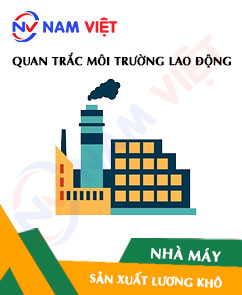
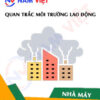
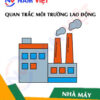

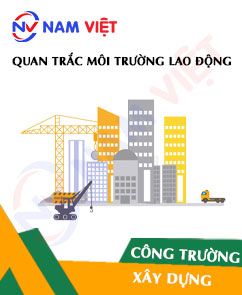
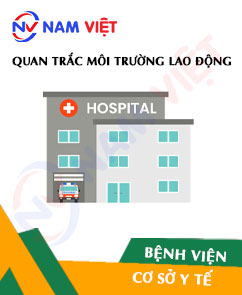
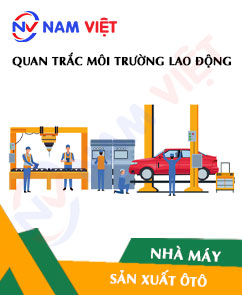
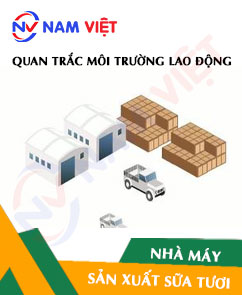


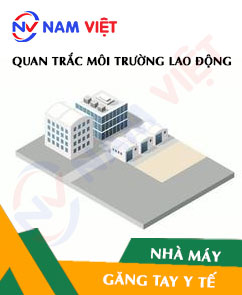
Review Occupational Environment Monitoring at the Dried Food Manufacturing Plant
There are no reviews yet.